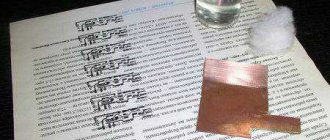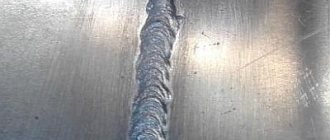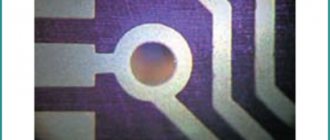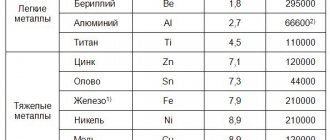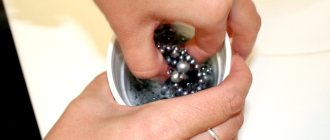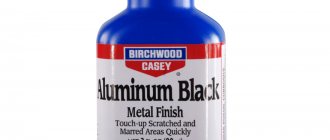How does aluminum get into water?
Where does aluminum in water come from? Saturation of water with aluminum occurs in two main ways. The increased concentration of aluminum in natural waters is due to rocks. Natural sources of metal are aluminosilicates and some types of clay. The second option for the substance and its compounds to enter water sources is associated with the results of human activity, which are:
- domestic water waste;
- wastewater from chemical industry enterprises;
- discharges and emissions from construction sites.
The volume of such wastewater with a high aluminum content is constantly increasing. Metal that gets into water actively dissolves, forming various compounds - hydroxide, bauxite, hydrochloride, etc. A significant part of them is toxic, which has a very negative effect on microorganisms living in natural water sources, seriously worsening the overall environmental situation.
Aluminum in natural bodies of water
Natural saturation of water with metal occurs due to the ingress of aluminosilicates and some types of clay into it. After their dissolution, the interaction of aluminum with water begins, directly depending on its pH. Dissolution under natural conditions occurs slowly, but always with the release of hydroxide, bauxite, hydrochloride and other compounds. The substances and aluminum itself are contained in both sea water and river water. But this is under normal conditions.
Metal enters natural waters from:
- drains of industrial and domestic waters;
- wastewater from chemical production (any production increases the concentration of aluminum in wastewater by 2-5 times);
- construction waste and emissions.
Every year there are more and more such emissions into the environment, and control over the degree of their pollution is becoming less and less. In dirty wastewater with a high content of impurities and suspended matter, aluminum dissolves faster in water. It enters water bodies in the form of suspended forms, ions and colloids. It is the ions and oxides that have increased toxicity. They have a detrimental effect on most living organisms living in natural sources. According to standards, the concentration of aluminum in natural waters should not exceed 0.5 mg/dm3.
MAC standards for aluminum in water
The regulatory framework currently in force in Russia strictly regulates the aluminum content in natural and drinking water, as well as water supply systems. GOST standards for drinking and industrial water have been developed separately. For natural water and liquids supplied to residential buildings from the water supply, the maximum metal concentration is set at 0.5 mg per liter of liquid. GOST for aluminum in drinking water is the main regulatory document in Russia. For bottled water, the maximum concentration limit for aluminum in drinking water is considered to be in the range from 0.2 to 0.3 mg/liter. For filtered purified liquid, the MPC standard for metal and its compounds is even stricter - within 0.1-0.2 mg per liter.
The daily intake of aluminum into the human body should not exceed 90 mg. It is necessary to take into account the fact that the metal is contained not only in drinking water, but also in almost all food products consumed. Additional sources of aluminum in the human body can be:
- cosmetic preparations;
- medicines;
- aluminum cookware;
- deodorants, air fresheners and other similar products.
The effect of aluminum in water on the human body
Let's look at why aluminum in water is harmful? The first and most noticeable manifestation of the negative impact of high aluminum content is the deterioration of the organoleptic qualities of water. It changes the taste and smell for the worse; during storage, even for a short time, sediment appears at the bottom of the container. It is formed by aluminum compounds, which are actively formed during the interaction of metal and water.
Another unpleasant consequence of increased metal content in drinking water and excess of its daily intake into the human body is long-term. It is expressed in inhibition of hemoglobin production, which leads to the appearance of neurological diseases and disruption of calcium-phosphorus metabolism. Considering such a serious negative effect, the importance of effective purification of drinking water from aluminum and its compounds becomes clear.
Aluminum in drinking water
The most common metal on the planet will certainly be contained in drinking water. According to the standards and requirements of GOST, aluminum in water must contain:
- no more than 0.5 mg/l in tap water;
- within 0.2-0.3 mg/l in bottled water;
- within 0.1-0.2 mg/l in filtered water.
Every day, the human body should receive no more than 90 mg of metal. But after the reaction of aluminum with water is completed, toxic impurities appear in it. Therefore, tap water, as well as well and borehole substances, should be checked for the concentration of unsafe impurities and components. Below is a table of maximum concentration limits for aluminum in drinking water and other substances important for human health.
How to determine aluminum in water
An accurate idea of the amount of the substance contained in drinking water can be obtained by chemical analysis of water for aluminum. Finding aluminum in water on your own is quite problematic. The most obvious criteria for identifying a problem is usually a deterioration in the taste and odor of drinking water. There are several methods in a chemical laboratory, the main ones being: determination of aluminum in water with aluminone and determination of aluminum in water with chromasurol. All experiments must be carried out on the basis of GOST for the determination of aluminum in water.
Additional indicators of an increased concentration of aluminum in a liquid are:
- with a metal content of 0.3 mg per liter and above, the color of the water changes, especially strongly with the simultaneous presence of iron in its composition;
- if this indicator exceeds a value of 0.4-0.5 mg/l, aluminum hydrochloride flakes begin to form in the liquid.
How to remove aluminum from water
The simplest and most effective way to purify water from aluminum is the reverse osmosis method. It involves passing the solution through special membranes. Particles of various impurities, including aluminum and its compounds, are retained on reverse osmosis membranes. Such a “filter” for purifying water from aluminum allows you to obtain the most purified water, which is used for drinking and technological purposes.
There are two main types of reverse osmosis plants - industrial and domestic. The first option involves the use of equipment for the water supply system of a home, estate or cottage, cafes, restaurants, as well as industrial enterprises. It is mounted in a utility room and allows you to remove aluminum and other impurities from any volume of water necessary for consumption. Industrial reverse osmosis is a great solution if your water test is high in aluminum. The standard equipment of an industrial reverse osmosis installation for removing aluminum from water includes the following elements:
- filter (one or more) for preliminary cleaning from large impurities;
- the membrane installation itself (reverse osmosis);
- a tank for purified water;
- pump for supplying water to the water supply system.
Household reverse osmosis units are compact in size and are mounted directly under the sink in the bathroom or kitchen. All of the listed parts of the water purification system from aluminum and other impurities are combined under one housing. Such equipment is noticeably cheaper, but allows you to get purified water from only one tap.
How to clean aluminum oxide at home
Aluminum is susceptible to oxidation. As the product is used, the oxide layer grows, which leads to the appearance of dark spots that cover the entire surface or individual parts.
You can clean oxide and blackness at home using available folk remedies:
- Soda. Dissolve the product in a small amount of water to obtain a paste. Apply the mixture to the stain and work the surface in a circular motion.
- "Coca Cola". Fill the item with soda and after 1.5 hours wash it with water.
- Sorrel. Place a bunch of fresh sorrel in a container that needs cleaning and fill it with water. Place the dishes on the stove and boil the mixture over low heat for 30 minutes. Drain the solution and rinse the product.
- Lemon acid. In a saucepan, combine 2 tbsp. l. citric acid and 1 liter of water. Boil the solution for 15-25 minutes, depending on the degree of contamination, and then wash the container with clean water.
- Apple. Rub the darkened, oxidized mark with half the fruit and leave for half an hour for the malic acid to take effect. After the time has passed, wash the container with detergent.
Baking soda effectively fights oxidation and dark stains on aluminum surfaces. The product is suitable for local application or large-scale cleaning of large items
Mustard powder, vinegar and salt
To remove blackness from the outer walls of the product, prepare a mixture of equal parts of table salt, vinegar and dry mustard powder. Mix the ingredients until smooth. Using a sponge, apply the mixture to the stains and after 15 minutes, rinse with warm water.
Salt
To clean aluminum, combine 2 tbsp. l. salt and 1 tsp. warm water. Mix the ingredients and apply to a sponge. Rub the mixture into the stained area, leave for half an hour, and then wash the pan.
Saline solution is a safe aluminum cleaner that breaks down dirt, removes blackness and helps remove carbon deposits.
Acids
To clean aluminum products, use products containing natural acids: kefir, lemon juice, yogurt, cucumber pickle. Fill the container or part with the selected product and leave overnight. In the morning, rinse the product and wipe dry.
Cleansers based on oxalic acid will help get rid of significant blackening. Apply the drug to the surface, wait the time indicated on the package, and then rinse with water.
Cream of tartar
You can remove dark spots using cream of tartar. To clean, dissolve 3 tbsp in 5 liters of warm water. l. product and soak the product in the resulting solution for 2-3 hours. Remove any remaining dirt with a soft sponge, rinse with warm water and wipe dry.
Darkening, dirty stains, soot and other contaminants spoil the aesthetic appearance of aluminum products. You can cope with problems at home using folk remedies or special household chemicals.
We offer our services for purifying drinking water from aluminum
Our company provides the opportunity to analyze water for aluminum and a number of other indicators, as well as select the appropriate option for completing a drinking water purification system from a number of pollutants, incl. aluminum ions. Our company's catalog presents a variety of models of industrial and household equipment from leading domestic and foreign manufacturers. The company's specialists are ready to provide professional advice and qualified assistance in choosing a reverse osmosis installation, taking into account the needs and requests of the client.

